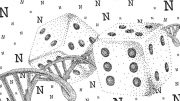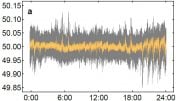
Promising outcomes in treating muscular dystrophies with Wharton’s jelly-derived mesenchymal stem cells show significant improvements in multiple muscles for most patients, with no serious side effects.
Results of a compassionate-use study released in STEM CELLS Translational Medicine show promising results for treating muscular dystrophies with mesenchymal stem cells (MSCs) derived from Wharton’s jelly (WJ), a substance found in the umbilical cord. Led by doctors at Klara Medical Center (KMC), Czestochowa, Poland, these WJ-MSC treatments resulted in significant improvement in several body muscles in most of the patients, with no serious side effects.
“Administration of WJ-MSCs in neurological indications is controversial; still, this paper shows that cell therapy is a reasonable experimental treatment option, although the eligibility criteria for treatment needs to be optimized,” said Beata Świątkowska-Flis, M.D., Ph.D., neurologist, unit head at KMC’s Polish Center for Cell Therapies and Immunotherapy and study leader.
Muscular dystrophies encompass a group of muscle diseases caused by mutations in a person’s genes that result in progressive muscle wasting and weakness. This can eventually lead to death from respiratory failure or cardiomyopathy.
“There are many kinds of muscular dystrophy, each affecting specific muscle groups, with signs and symptoms appearing at different ages, and varying in severity. Although over 30 unique genes are involved in their pathogeneses, a similar mutation in the same gene may cause a wide range of phenotypes, and distinct genes may be responsible for one identical phenotype. Because of this heterogeneity, pharmacologic treatments are limited,” said Dr. Świątkowska-Flis.
The current options include supportive care and drugs. While steroids are the gold standard in pharmacotherapy, they can have significant side effects, among them weight gain, puberty delay, behavioral issues, and bone fractures.
“Although stem cells cannot resolve the underlying genetic conditions, their wide-ranging therapeutic properties may ameliorate the consequences of the involved mutations. Our study describes the clinical outcomes of the compassionate use of WJ-MSCs in patients with muscular dystrophies treated in real-life settings,” Dr. Świątkowska-Flis said.
The study involved 22 people with varying types of muscular dystrophies. The group was equally divided between male and female, and the median age was 33. Each person received 1-5 intravenous and/or intrathecal injections per treatment course in up to two courses every two months. Muscle strength was then assessed by using a set of CQ Dynamometer computerized force meters.
“In the group as a whole, we saw significant improvement in several body muscles, including limb, hip, elbow and shoulder,” Dr. Świątkowska-Flis reported. “In the most successful case, the patient began moving without a crutch, stopped rehabilitation, and rejoined a full-time job.”
While these results are impressive, the doctors caution that it is too early to determine the position of MSCs in treating muscular dystrophies.
“For example, we don’t know how long the therapeutic effect will last; it might be that the therapy should be repeated cyclically. Further studies are needed to optimize stem cell therapy both in terms of treatment scheme in a long period and possible synergy with pharmacological drugs and/or rehabilitation. Still, we believe the results are cautiously encouraging, especially in light of no other efficient treatment,” Dr. Świątkowska-Flis said.
“While use of mesenchymal stem cells in neurological indications is controversial, this study shows that cell therapy is a reasonable experimental treatment option for this rare group of muscle diseases,” said Anthony Atala, M.D., Editor-in-Chief of STEM CELLS Translational Medicine and director of the Wake Forest Institute for Regenerative Medicine. “No side effects were observed and the data stemming from this study is potentially encouraging and of interest. We look forward to the continuation of this research to further document clinical efficacy.”
Reference: “The use of umbilical cord-derived mesenchymal stem cells in patients with muscular dystrophies: results from compassionate use in real-life settings” by Beata Świątkowska-Flis, Izabela Zdolińska-Malinowska, Dominika Sługocka and Dariusz Boruczkowski, 27 July 2021, Stem Cells Translational Medicine.
DOI: 10.1002/sctm.21-0027









Be the first to comment on "Controversial Stem Cell Treatments Alleviate Muscular Dystrophy Symptoms"